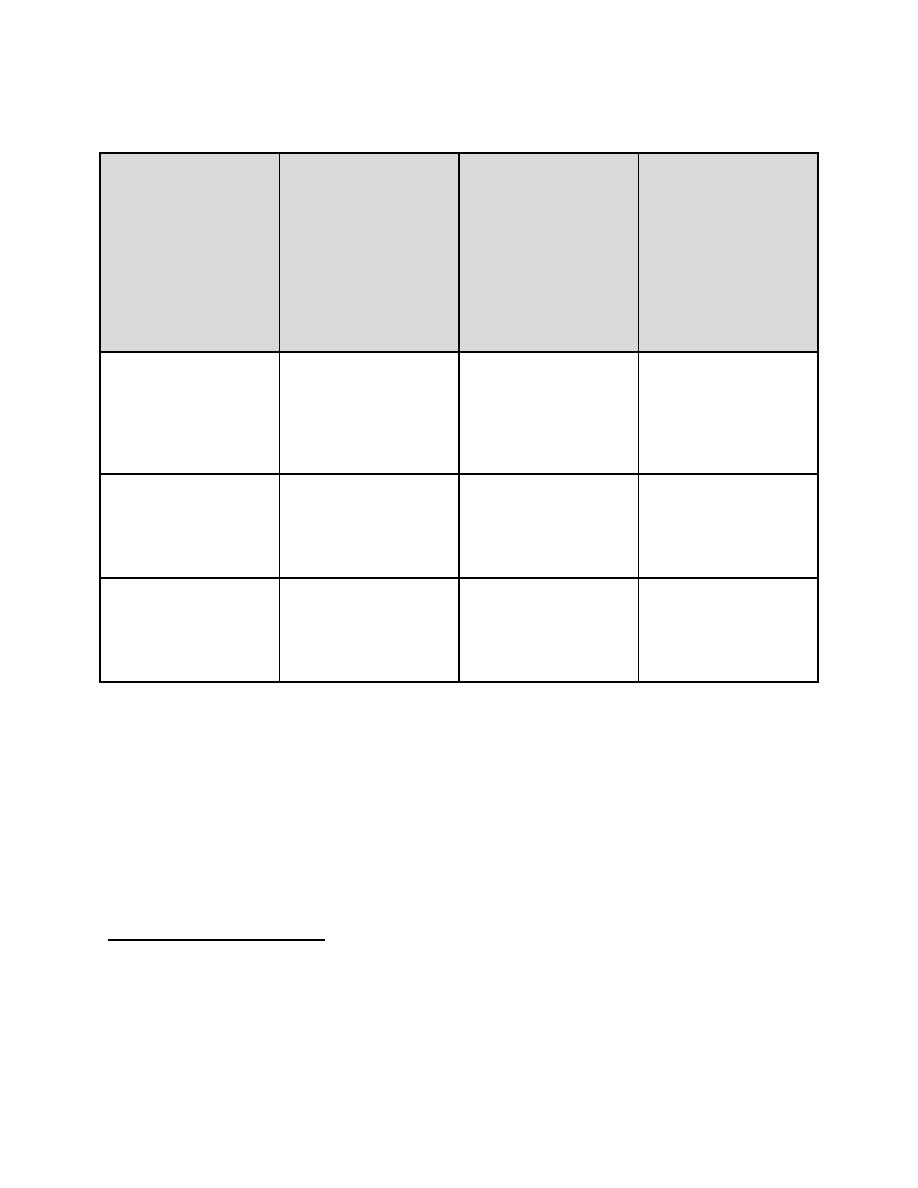 |
|||
|
|
|||
|
Page Title:
Table 1: Consequence Levels and Risk Evaluation Guidelines |
|
||
| ||||||||||
|
|  DOE-STD-1120-2005/Vol. 2
Table 1: Consequence Levels and Risk Evaluation Guidelines
Consequence
Offsite Public
Hypothetical Onsite
Site
Level
Worker
Facility
MOI 1, 2
Worker
MEI3 location not less
Involved worker3
than 100 meters or
facility boundary
within facility
from the point of
boundary
release
Use highest dose
For elevated doses use
within facility
point of highest doses
boundary
For Safety Significant
Considerable on-site
Considerable off-site
designation, consequence
High
impact on people or the
impact on people or the
levels such as prompt
environs.
environs.
death, serious injury, or
25 rem
significant radiological
> 100 rem TEDE or
> 25 rem TEDE or
100 rem
and chemical exposure,
> ERPG-3/TEEL-3
> ERPG-2/TEEL-2
should be considered.
Considerable on-site
Only minor off-site
impact on people or the
impact on people or the
Moderate
environs.
environs.
25 rem > 1
≥ 25 rem TEDE or
≥ 1 rem TEDE or
100 rem > 25
> ERPG-2/TEEL-2
> ERPG-1/TEEL-1
Negligible off-site impact
Minor on-site impact on
on people or the
Low
people or the environs.
environs.
< 1 rem
< 25 rem
< 25 rem TEDE or
< 1 rem TEDE or
< ERPG-2/TEEL-2
< ERPG-1/TEEL-1
Notes:
DSA: Documented Safety Analysis
MEI: Maximally-Exposed Collocated Worker
MOI: Maximally-Exposed Offsite Individual
SMP: Safety Management Programs,
Chapters 6-17 of the DSA
SSC:
structures, systems, or components
TSR: Technical Safety Requirements
1
Offsite consequences that challenge 25 rem must be protected with Safety Class SSCs independent of frequency
2
Hazard Analyses qualitatively evaluate public consequences at the shortest distance to the site boundary. Accident
Analyses must utilize 95% X/Q for public consequence determination.
3
Beyond safety-significant SSCs designated for worker safety and their associated TSR coverage, additional worker
safety issues should be covered in TSRs only by administrative controls on overall safety management programs.
E-4
|
|
Privacy Statement - Press Release - Copyright Information. - Contact Us |